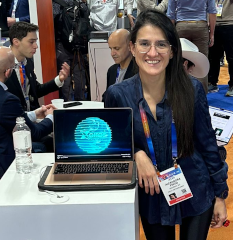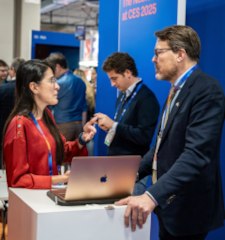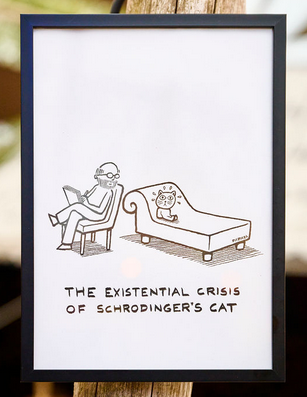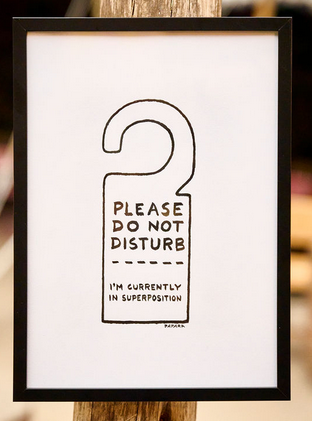
 David Mitlyng for Xairos
David Mitlyng for Xairos
...Looking Forward 2025
Happy New Year, and Happy International Year of Quantum Science and Technology (IYQ)!
The United Nations designated 2025 as the IYQ to celebrate a century of quantum development and to "increase public awareness of the importance of quantum science and applications."
Even though quantum is a recent discovery (and still not well understood), we have now reached the point where "quantum technology will exponentially accelerate the Fourth Industrial Revolution."
The First Quantum Revolution
The term "quantum" came from Albert Einstein's paper that described the lichtquanta, a particle of light (what we now call a photon), in 1905. This led to the theories and thought experiments that laid the groundwork for superposition, entanglement, the uncertainty principle, and other principles of quantum mechanics over the following decades. World War II disrupted this incredible period of discovery, and the race for the atomic bomb moved quantum from theory to the lab. This research led to the First Quantum Revolution with the advent of lasers, semiconductors, atomic clocks, and LEDs that take advantage of the bulk quantum properties of materials.
The Second Quantum Revolution
We are now in the midst of the Second Quantum Revolution where we are actually manipulating the quantum properties of individual particles for amazing applications.
While the First Quantum Revolution laid the foundation for understanding and applying quantum mechanics to develop technologies like transistors and lasers, the Second Quantum Revolution focuses on directly harnessing the fundamental principles of quantum information. This approach leverages quantum properties such as superposition, where a system can exist in multiple states simultaneously, and entanglement, where particles become deeply connected so that the state of one instantly influences the other.
This new generation of quantum technologies, which fall under three broad areas, are at different stages of maturity:
- Quantum Computing is a new (but fundamentally different) type of computer that uses quantum bits (qubits) to solve optimization problems (like the famous traveling salesman problem) that are beyond the capabilities of today's computers.
- Quantum Sensing uses the quantum properties of particles for very sensitive clocks, inertial, electromagnetic, gravity, and magnetic field sensors.
- Quantum Communications leverages the quantum properties of photons and novel devices such as quantum memories and quantum transducers, primarily for security applications, including quantum random number generation (QRNG), quantum key distribution (QKD), quantum time transfer (QTT), and quantum networking.
Of these, quantum computing is the most famous (and gets the most funding), and the battle for quantum computing supremacy is heating up. Google announced their 105 qubit Willow chip, while Chinese researchers announced a similar capability with Zuchongzhi 3.0. But, more important than the number of qubits, is the problems that they can solve. Both Willow and Zuchongzhi performed Random Circuit Sampling (RCS) experiments in a few minutes that would take thousands of years on a classical supercomputer.
Quantum and Cybersecurity: Friend or Foe?
Quantum computing still has skeptics because the applications aren't well understood, with one notable exception: the ability to, one day, crack public key infrastructure (PKI). So preparations are underway to replace PKI ahead of this so-called Q-Day with either new software, known as post-quantum cryptography (PQC), or new hardware, known as quantum key distribution (QKD).
Mosca's Law (named after Michele Mosca, a pioneer in quantum cryptography) emphasizes the urgency of transitioning to quantum-resistant cryptographic systems. It highlights the interplay between the time required to replace vulnerable cryptographic systems and the time it takes for quantum computers to become powerful enough to break current cryptographic schemes.
PQC utilizes new encryption algorithms that, in theory, quantum computers cannot crack. But they require testing, with the US National Institute of Standards and Technology (NIST) evaluating suitable PQC options.
QKD delivers encryption keys through the quantum properties of photons, which makes it more robust - and more expensive - than PQC.
So with Mosca's Law in effect, there is a debate on the best solution; the US government encourages PQC, while other countries have embraced QKD or hybrid solutions.
Coming out of the Shadow of Quantum Computing
In the meantime quantum sensors and communications are already starting realize their commercial potential.
Very sensitive quantum sensors have shown an incredibly disruptive potential but, for the most part, need to be further developed into a commercially-viable package. The increased sensitivity allows detection of very weak signals in healthcare applications such as imaging brain activity, or remote detection for subterranean mineral deposit surveys. Additionally, connecting more sensors together in a networked configuration can further boost their accuracy and sensitivity.
Quantum communications hardware, on the other hand, are already being installed in cell phones, networks, and satellites, primarily for quantum-secure communications.
For both, position, navigation, and timing (PNT) is emerging as the killer app (see below).
Last Week's Theme: 2024 Looking Back...
Back from the holidays and hard at work:
- January will be busy! Four major program reviews in the next month, but thanks to a strong team effort we have good progress to highlight for our customers.
- Exhibiting for the first time at the Consumer Electronics Show so if you are in Las Vegas stop by booth #62100.


Looking ahead to 2025:
- Developing a portable demonstration kit to show how flying qubits can deliver time.
- New announcements coming out soon!
- Working on new commercial and government solutions, with the goal of delivering practical timing systems and announcing our first satellite in the new year.
- Planning ahead for a busy year of PNT, quantum, space, and photonics conferences.
- GPS spoofing incidents continue to increase, with reports of interference with ship navigation in "Finland, in the north of Poland and in the waters of the Baltic," the diversion of a Ryanair flight from its Vienna destination, and "persistent GPS interference in Bulgaria that may be malicious "to destabilize Bulgaria" after the "EU decided to include Bulgaria and Romania in the Schengen visa-free zone."
- Some also believe that "GPS interference a factor" in the recent Azerbaijan Airlines crash.
- Scientists have announced a breakthrough in quantum teleportation over normal fiber optics, paving the way for a future quantum network.
- Previously we talked about how to stop the drone invasion by cutting off their communication and PNT links. Case in point: recent video from a drone show in China showing a swarm of drones plummeting from the sky thanks to "jamming."
- Consumer Electronics Show, January 5 - 7, Las Vegas, NV
- Ground System Architecture Workshop (GSAW), February 24 - 28, El Segundo, CA (Presenting)
- Satellite 2025, March 10 - 14, Washington DC
- Space Symposium, April 7 - 10, Colorado Springs, CO (Stay Tuned!)
- Nemertes [NEXT], April 7 - 10, Nashville, TN (Presenting)
- Workshop on Synchronization and Timing Systems (WSTS), May 12 - 15, 2025, Savannah, GA
- European Navigation Conference, May 21 - 23, 2025, Wroclaw, Poland
Quantum-enabled PNT has emerged as the major focus for quantum sensors and communications, not just because the tech is mature, but because it solves a major near-term problem: augmenting GPS.
While there isn't one specific quantum technology that can address everything GPS provides, taken together these quantum technologies create a total system solution:
- Position - sensitive quantum position sensors can measure minute changes in the Earth's magnetic or gravity fields to help determine your location, even for submarines or underground.
- Navigation - ultra sensitive inertial reference quantum sensors can measure changes in motion.
- Timing - ultra stable clocks help maintain network time references without a GPS timing signal (known as holdover), and unspoofable time transfer using entangled photons can provide very accurate and provably authenticated time synchronization.
When it comes to GPS, most people think of position for location apps - after all, it is the P in GPS. But it is actually the least valuable aspect of GPS.
Time, on the other hand, is incredibly valuable - not for humans, perhaps, but for the electronics and networks that power the modern world.
Atomic clocks have been available for decades and new quantum optical clocks offer the promise of even more stable timing. But there is always a need for synchronizing these clocks. Traditional time transfer is through RF signals or data packets, but at a precision that is lagging well behind the accuracy of this new generation of clocks. But new optical and quantum time transfer methods can reach these levels leveraging readily available hardware that was developed for optical and quantum communications.
Stop Me if you Heard This One...


Please contact the artist to get your own quantum print.
To learn more, please email us.

